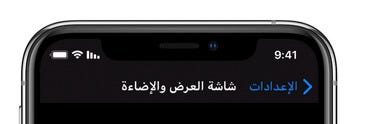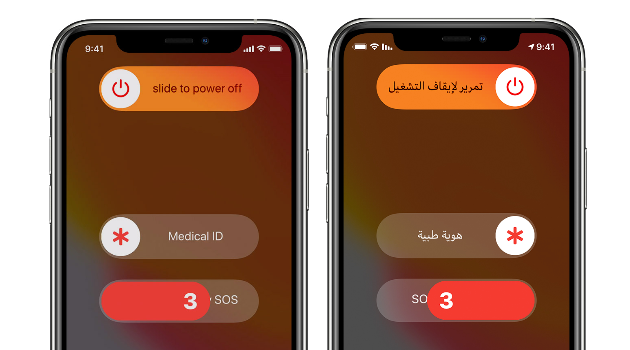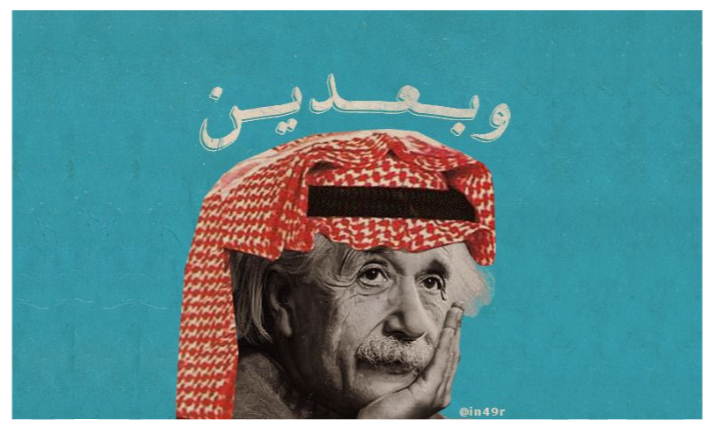阿拉伯語排版設計
Let me start off with some data to put things into perspective “Why?”
讓我從一些數據入手,以透視“為什么?”的觀點。
Arabic is the 5th most spoken language worldwide, with 420 million speakers, and is an official language in 20 countries.
阿拉伯語是全球排名第五的語言,有4.2 億說話者,并且是20個國家/地區的官方語言。
60% of Arabs (and as many as 97% in Saudi Arabia and Egypt) prefer browsing in Arabic. (source: Arab media outlook)
60%的阿拉伯人( 沙特阿拉伯和埃及多達97% )更喜歡使用阿拉伯語瀏覽。 (來源: 阿拉伯媒體展望 )
Only 3% of the content online is in Arabic.
在線內容中只有3%是阿拉伯語。
As an Arabic speaker myself, I’ve been exposed to bad user experiences very early on in my life. From alignment issues, poorly translated text to the use of unreadable fonts, confusing calendars, and mysterious currency symbols.
我本人是阿拉伯語使用者,從小就接觸到不良的用戶體驗。 從對齊問題,翻譯不佳的文本到使用無法讀取的字體,混亂的日歷和神秘的貨幣符號。
My first encounter with Right-to-left layout issues was when I was 10 years old at the stationary section in my hometown’s first foreign supermarket chain.
我第一次遇到從右到左的布局問題是在我十歲的時候,在我家鄉的第一家外國超市連鎖店的固定部分。

In one of my occasional strolls there, where I’d marvel at unpractical but-good-for-show-off pens and notebooks. I found an Arabic notebook that looked different, but for all the wrong reasons.
在我偶爾散步的地方之一,我會驚嘆于不切實際但值得炫耀的鋼筆和筆記本。 我發現了一個阿拉伯語的筆記本,看上去有些不同,但是出于所有錯誤的原因。
The Name Field space was tiny. “How am I supposed to squeeze in my full name there?” There are at least 4 Sarah’s in my class, and a dozen Mohamed’s.
名稱字段空間很小。 “我應該怎么擠我的全名?” 我班上至少有4位莎拉(Sarah)和12位穆罕默德(Mohamed)。
The Notebook Labels Box was printed at the back (left cover) of the notebook. “How inconvenient” I thought to myself. The teacher would have to turn the notebook to see the student info and then turn it again to start reviewing the student’s homework.
筆記本標簽盒印在筆記本的背面(左蓋)。 我心想:“多么不方便”。 老師將不得不打開筆記本以查看學生信息,然后再次打開筆記本以開始查看學生的作業。
The Page Layout was also quite not right. The date and subject fields were flipped. Normally, we’d start off by writing the subject of the lesson (placed at the top-right corner of the page), and then move on to date fields (placed at the top-left corner of the page).
頁面布局也不完全正確。 日期和主題字段被翻轉。 通常,我們首先編寫課程主題(放置在頁面的右上角),然后移至日期字段(放置在頁面的左上角)。
“Maybe I could get it for my english class”, I said to myself and went to look for my mom whom I escaped at the home section.
“對我的英語課來說,也許我可以得到它。”我對自己說,去找我在家庭區逃脫的媽媽。
為阿拉伯用戶設計和測試 (Designing and testing for Arabic users)
1)從右到左布局(RTL) (1) Right-to-left layout (RTL))
Arabic, Hebrew, Persian, and Urdu are the most widespread RTL writing systems in modern times. Unlike the rest of the world’s population, our brains are wired to read, write and scan things from right to left, let air in from right nostril, and out from the left. (just kidding)
阿拉伯語,希伯來語,波斯語和烏爾都語是現代最廣泛的RTL書寫系統。 與世界其他地區的人不同,我們的大腦從右到左被連接起來閱讀,書寫和掃描事物,從右鼻Kong進入空氣,從左進入空氣。 (開玩笑)

調節開關 (Flip the switch)
When a UI is changed from LTR to RTL (or vice-versa), it’s often called mirroring. An RTL layout is the mirror image of an LTR layout.
當UI從LTR更改為RTL(反之亦然)時,通常稱為鏡像。 RTL布局是LTR布局的鏡像。
As explained in Material Design’ guidelines for Bidirectionality, mirroring is considered the 101 rule for bidirectional UX, and it effects everything from layout, text to graphics and icons.
如Material Design的“雙向性”指南中所述 ,鏡像被視為雙向UX的101規則,它影響從布局,文本到圖形和圖標的所有內容。
Mirroring icons
鏡像圖標
Back and forward navigation buttons are reversed
前進和后退導航按鈕反轉



觸控手勢 (Touch gestures)

鏡像等級和頁面選擇器 (Mirroring rating and page selectors)

不要對數字使用鏡像 (Don’t use mirroring for numbers)

Unlike text, numbers are read and written from left-to-right even within phrases. This also applies for phone numbers.
與文本不同,數字甚至在詞組內也從左至右讀寫。 這也適用于電話號碼。
常見的鏡像錯誤: (Common mirroring mistake:)
Cursors that make you want to curse. Cursors in most input fields fail to follow the direction of the inputted text.
使您想詛咒的游標。 大多數輸入字段中的光標無法遵循輸入文本的方向。


2)數字🔢 (2) Numbers 🔢)
There are two ways of writing numbers in Arabic:
阿拉伯數字有兩種寫法:
- Hindi: ? ? ? ? ? ? ? ? ? ? 印地語:? ? ? ?
- Arabic: 0 1 2 3 4 5 6 7 8 9 阿拉伯語:0 1 2 3 4 5 6 7 8 9
According to Wikipedia:
根據維基百科 :
the reason the digits are more commonly known as “Arabic numerals” in Europe and the Americas is that they were introduced to Europe in the 10th century by Arabic-speakers of North Africa, who were then using the digits from Libya to Morocco.
數字在歐洲和美洲被更普遍稱為“阿拉伯數字”的原因是,它們是由北非的阿拉伯語國家于10世紀引入歐洲的,后來他們使用從利比亞到摩洛哥的數字。
常見數字錯誤: (Common numbers mistakes:)
Inconsistency: Displaying a mix of both types.
不一致:同時顯示兩種類型。

Not supporting both types on input: Numbers associated with Arabic keyboards are the “hindi numbers” and switching to “Arabic numbers” requires users to switch to the English Keyboard (accessed with a minimum of 3 clicks)
不支持兩種類型的輸入:與阿拉伯語鍵盤關聯的數字是“印地語數字”,切換到“阿拉伯語數字”要求用戶切換到英語鍵盤(至少需要單擊3次才能訪問)
3)貨幣顯示 (3) Currency display)
There are 3 ways to display currencies online and offline:
有3種在線和離線顯示貨幣的方式:
Currency name: Saudi Riyal, for example, is displayed as “????” which refers to “Riyal”
貨幣名稱:例如,沙特里亞爾顯示為“ ???? ”,表示“ 里亞爾 ”
Currency Symbol: Saudi Riyal is abbreviated to “?.?”, the first letter is the currency’s first letter (? = ????) while the 2nd one is the country’s first letter (? = ?????)
貨幣符號 :沙特里亞爾縮寫為“ ?.? ”,第一個字母是貨幣的第一個字母(?=????),而第二個字母是國家的第一個字母(?=?????)
Currency ISO code: where Saudi Riyal is displayed as “SAR”
貨幣ISO代碼:沙特里亞爾顯示為“ SAR ”
A list of currencies and its symbols in Arabic can be found here
可以在這里找到阿拉伯語的貨幣列表及其符號

常見貨幣錯誤: (Common currency mistake:)
Targeting/operating in multiple Arab markets, and using currency name only. Different Arab countries share the same currency name. For example, Riyal is the currency for Saudi, Oman, Qatar, and Yemen while Dinar is the currency for 7 Arab countries. For this case, using currency Symbol is a better option as it tells the user the currency and country.
在多個阿拉伯市場定位/運營,并且僅使用貨幣名稱。 不同的阿拉伯國家使用相同的貨幣名稱。 例如, 里亞爾是沙特,阿曼,卡塔爾和也門的貨幣,而第納爾是7個阿拉伯國家的貨幣。 對于這種情況,使用貨幣符號是更好的選擇,因為它會告訴用戶貨幣和國家。
4)日歷 (4) Calendars)
Gregorian Calendar — Latin month names: Used in the majority of Arab countries. Where May ,for example is, referred to as “Mayo” “????” and “September” as “Sebtember” “??????” which may or may not have to do with the inexistence of the letter P in Arabic
陽歷-拉丁月份名稱:在大多數阿拉伯國家中使用。 例如,將May稱為“ Mayo”,“????”和“ September”稱為“ Sebtember”,“??????”,這可能與阿拉伯語中字母P的不存在或無關
Gregorian Calendar — Syriac month names: Used mostly in Syria and Lebanon. Where months are named after Assyrian calendar months. the month of May is referred to as ???? “Ayyar”.
公歷—敘利亞月份的名稱:主要用于敘利亞和黎巴嫩。 月份以亞述歷月命名。 5月被稱為????“ Ayyar” 。
Hijri Calendar: Used in Saudi Arabia. Hijri, the Islamic calendar, is lunar-based, consisting of 12 lunar months in a year of 354 or 355 days. It is used to determine the days of Islamic holidays and rituals, such as Ramadan, the annual period of fasting, and the proper time for the pilgrimage to Mecca.
回歷日歷:在沙特阿拉伯使用。 伊斯蘭歷法回歷以陰歷為基礎,一年中的354天或355天包含12個陰歷月。 它用于確定伊斯蘭節日和禮節的日期,例如齋月,每年的禁食時間以及前往麥加朝圣的適當時間。
常見日歷錯誤 (Common calendar mistake)
- Using Gregorian calendar with syraic month names which is used primarily in 2 countries for all your Arab users. 將帶有公歷月份名稱的公歷使用在兩個國家中主要用于您的所有阿拉伯用戶。
- Not offering a Hijri calendar as an option when a big share of your users are from Saudi 當很大一部分用戶來自沙特阿拉伯時,不提供回歷日歷作為選項

Besides displaying content in the right layout and in the preferred format (numbers / calendars / currencies), Language, typography, and choice of graphics play a big role in the experience of your users and their perception of you as a brand.
除了以正確的布局和首選格式(數字/日歷/貨幣)顯示內容外,語言,印刷術和圖形選擇在用戶體驗以及他們對您的品牌認知中也起著重要作用。
And It goes without saying, there’s no single monolithic Arabic UX. Arabic as a language have evolved significantly throughout the years and so are the experiences and preferences of the Arab market. The best way to build usable products is by researching your own users
不用說,沒有單一的整體阿拉伯用戶體驗。 這些年來,阿拉伯語作為一種語言已經有了長足的發展,阿拉伯市場的經驗和偏好也是如此。 打造可用產品的最佳方法是研究自己的用戶
翻譯自: https://uxdesign.cc/testing-and-designing-for-arabic-speaking-users-acbe701b9fed
阿拉伯語排版設計
本文來自互聯網用戶投稿,該文觀點僅代表作者本人,不代表本站立場。本站僅提供信息存儲空間服務,不擁有所有權,不承擔相關法律責任。 如若轉載,請注明出處:http://www.pswp.cn/news/274843.shtml 繁體地址,請注明出處:http://hk.pswp.cn/news/274843.shtml 英文地址,請注明出處:http://en.pswp.cn/news/274843.shtml
如若內容造成侵權/違法違規/事實不符,請聯系多彩編程網進行投訴反饋email:809451989@qq.com,一經查實,立即刪除!








)


精)






